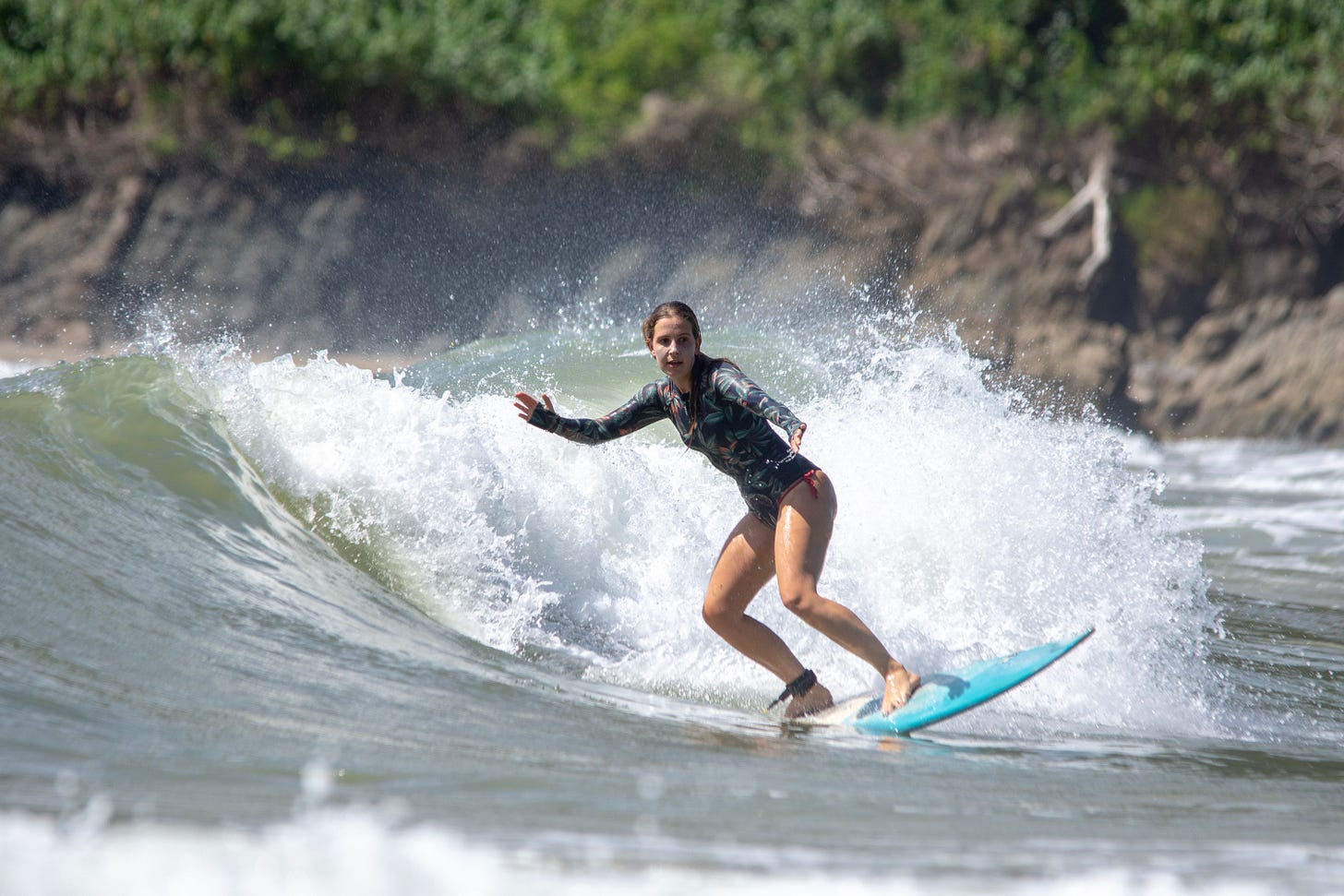5 things great product leaders and surfers have in common
This newsletter is a really special one. When I introduce myself to prospective clients, I normally share a few things that fuel my life—naturally, these are also where I draw my stories and examples from. One of them is surfing.
I learned to surf when I was little, but I truly fell in love with it again about a year and a half ago. It’s one of the things I do solely for myself and purely for fun! I even joke that I surf with a “board to be happy.” Surfing is a profoundly insightful sport, and it has taught me so much about life, products, and business.
Over the past month, I’ve been surfing and working in one of my favorite places in the world, and it’s reminded me just how much surfing and building great products have in common.
As a coach, I love using analogies and stories to explain complex ideas. They help people visualize concepts in new ways, arrive at their own conclusions, and take action more quickly. Stories, in particular, offer examples that naturally prompt people to reflect on their challenges. That’s why surfing has become one of my favorite lenses for sharing these lessons.
With that in mind, here are five lessons surfing has taught me about product and product leadership.
You go where you’re looking
In surfing, you go where you're looking. Look down, and you’ll quickly find yourself at the bottom of the ocean. Look forward, and you’ll ride straight to the beach. Look to the side, and you’ll carve amazing turns. Your board simply won’t turn if you’re not looking in the direction you want to go.
The ocean dictates the waves
Surfing is such a deep sport because it requires letting go of the illusion of control. No matter how skilled you are, you can’t change the tides or the wave forecast. The ocean sets the conditions, and you have to adapt.
In surfing, your first decision is whether to surf or not based on the conditions. The ocean is powerful and not to be taken lightly, so you must assess the conditions and decide if and where you’ll surf.
Additionally, some waves are more meaningful as they shape the entire lineup. In surfing, these are called “set waves,” and you have to decide whether to take them. Committing to one means fully riding it out. They’re usually big and powerful, but they bring huge rewards when handled well, just like in business.
There are different boards for different conditions
Once you decide whether to surf and choose your surf break, the next decision is what board to use. Your board is the tool you have to take on the waves.
No two boards are the same, and even the best surfers switch boards depending on the conditions. Shortboards offer more speed but require greater power, while longboards work better in weaker waves but are harder to maneuver.
Similar to picking the wrong board for surfing, choosing the wrong strategy is expensive and frustrating. To maximize success, your strategy should be informed by real user needs and focused on solving meaningful pain points.
Consistent great waves make great surfers
Surfing is a difficult sport. There is your mental game, the board, the tide, the wind, the wave, and the people around you. The best way to get better at catching waves is to catch as many as possible, analyze them, and improve the next time.
When good waves are few and far apart, the pressure builds. People get more nervous, are more likely to fall, and often take fewer risks. When there are plenty of great waves, the pressure eases. Of course, you want to catch every wave that comes your way, but if you miss one, there’s another right behind it that might be even better.
Consistency gives surfers the confidence to experiment, improve, and find what works best.
Once you decide to go, you need to give it 100%
Once you’re in the water, you need to choose a wave and fully commit. You’ll never catch a wave without committing 100%. This means selecting the right wave, positioning yourself well, paddling with strength, and getting into the best stance to ride and enjoy it to the fullest.
Once you decide to go, that wave has to be your only focus. Lose focus for a second, and you’ll miss it or, worse, fall. The same applies to product strategy.
I tell my customers their strategy should be something they believe in so strongly that they are willing to bet on it until proven wrong. A great way to test your strategy is to ask your team: Do we believe in this enough to invest in it until it's proven false?
Even though surfing is an individual sport, your progress depends on the people around you. The crowd that pushes you to paddle even when the wave looks scary. The coaches who give you one small tip like shifting your back knee inward, completely changing your surfing. The friends who cheer when you catch a great wave and push you to go for more.
Product leadership can feel lonely, but the best leaders find ways to surround themselves with people who make them better—through coaching, shared experiences, and real conversations. I’ve seen this firsthand. One of the biggest influences on my career and life has been having the right people and mentors in my corner. The last lesson is simple: if you want to excel, find people who will push you forward and root for you to paddle harder to catch your dream wave.










